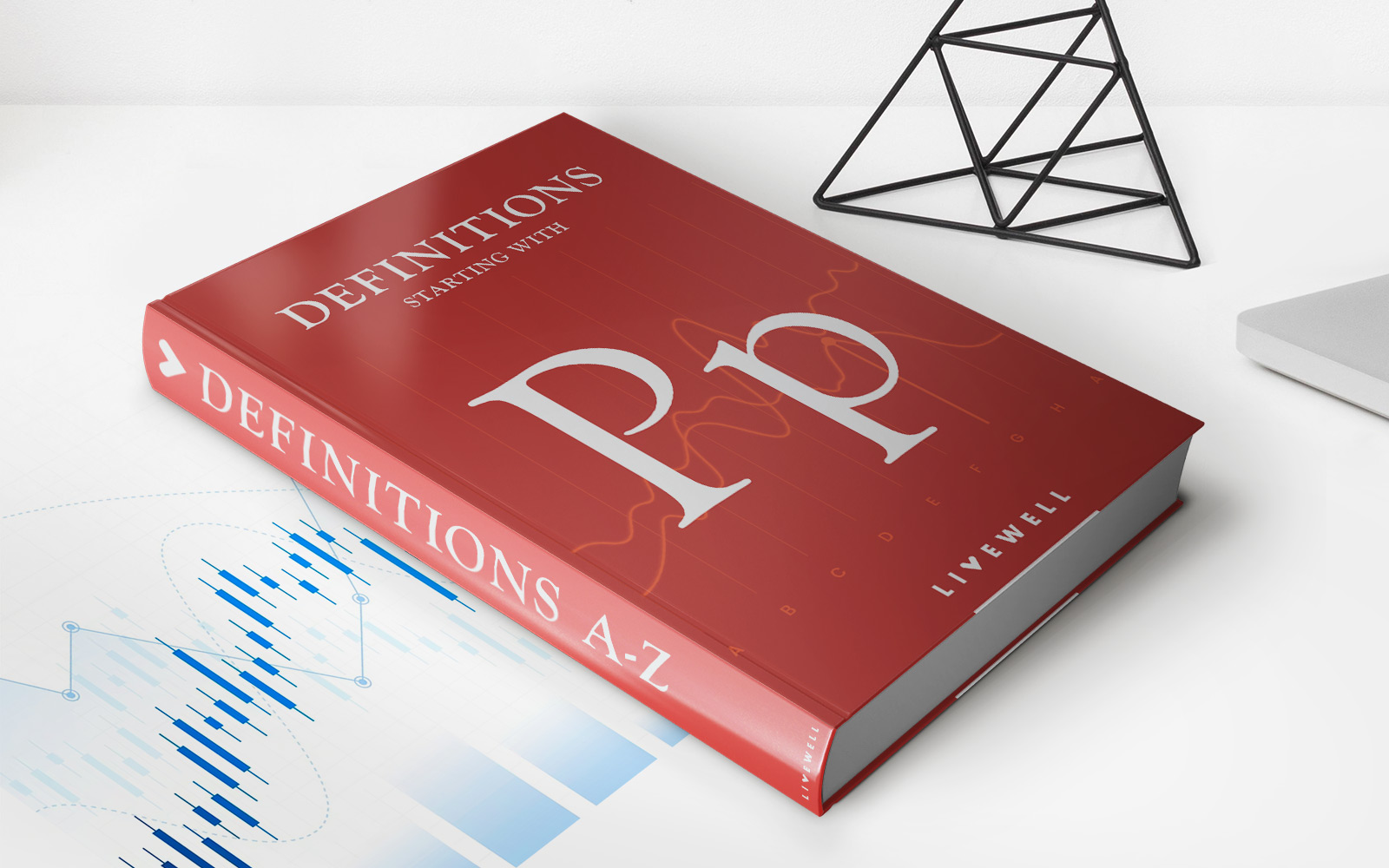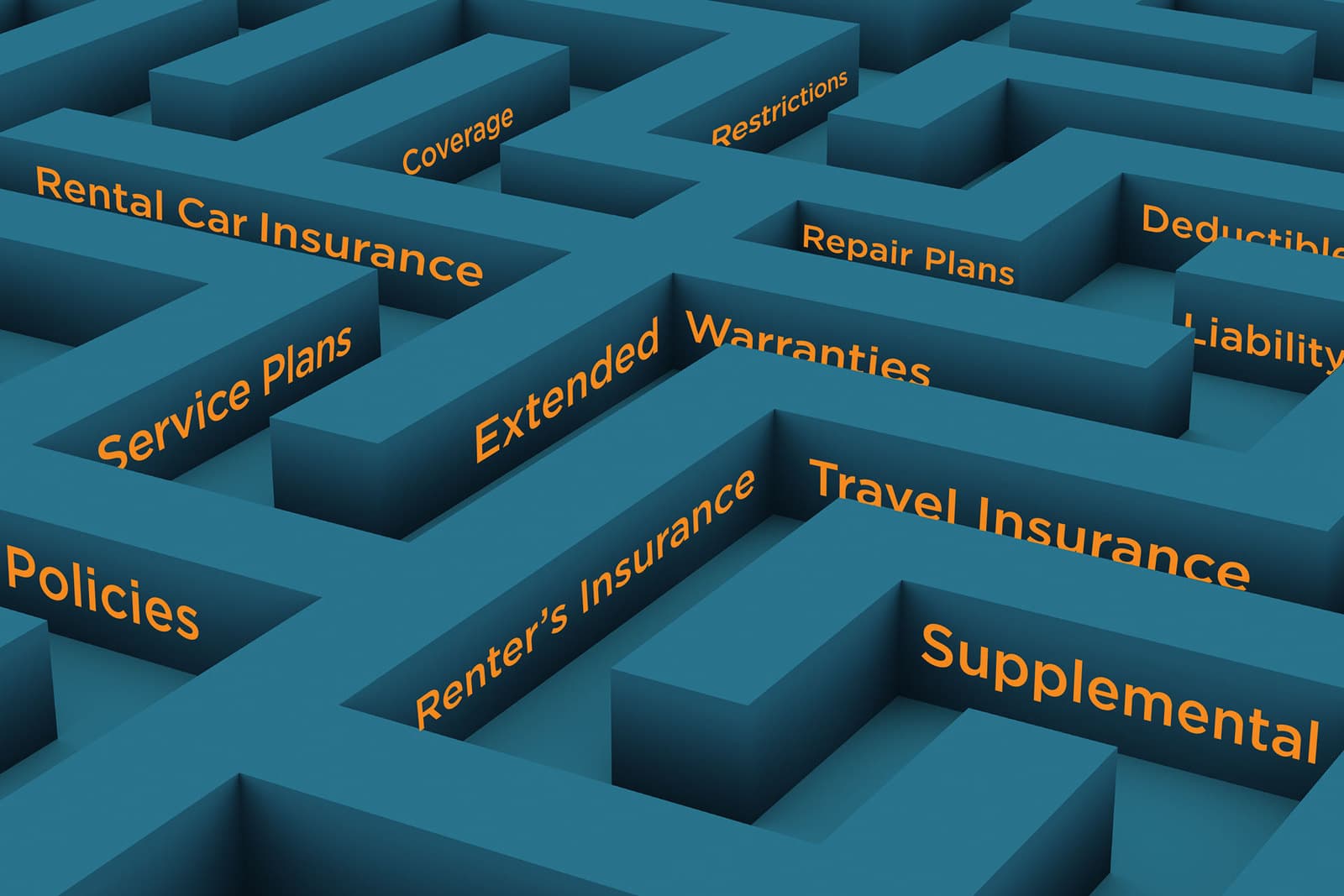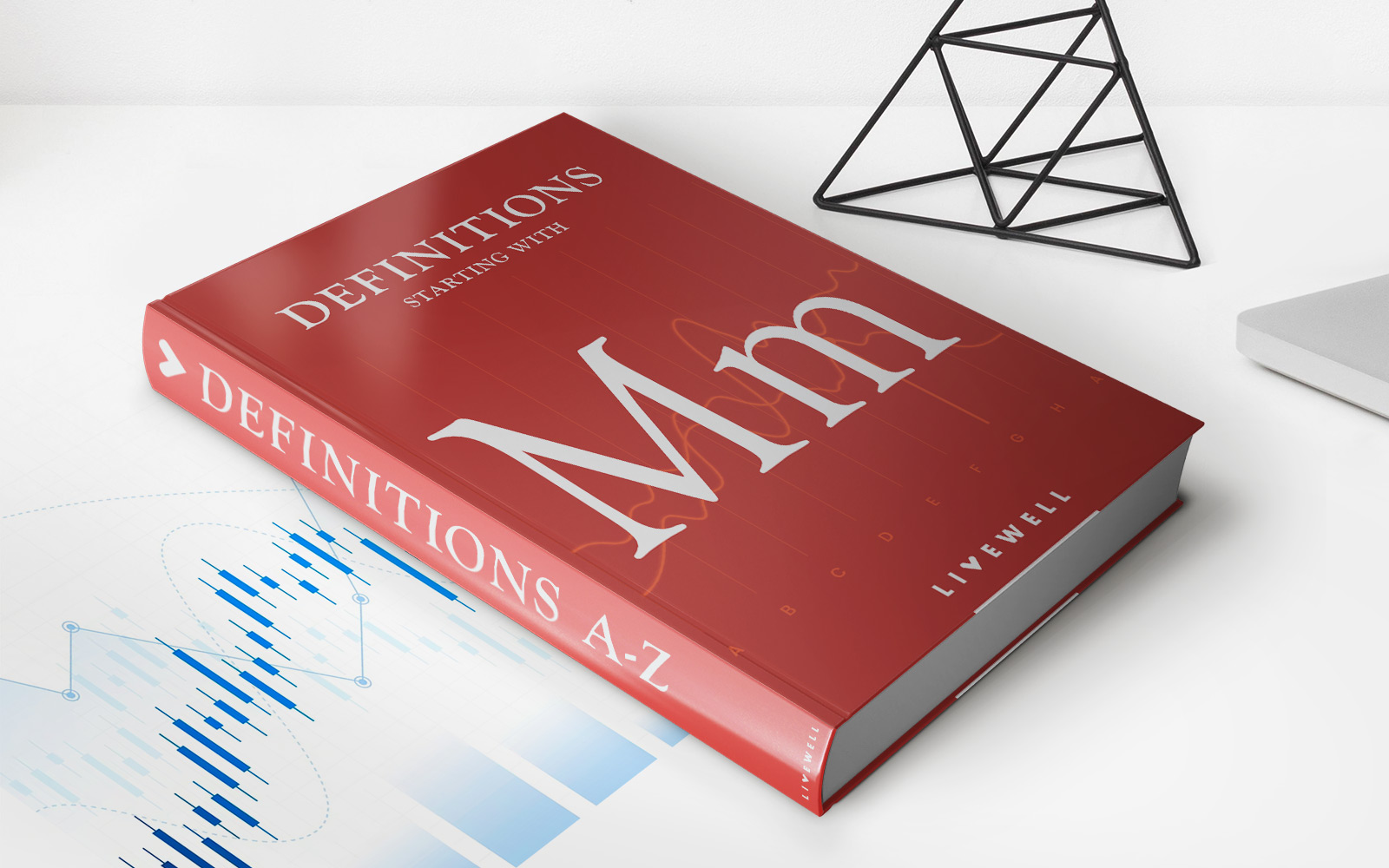

Finance
What Is Blanket Insurance Coverage
Published: November 22, 2023
Understanding the importance of blanket insurance coverage in finance, this article provides insights into its benefits and how it safeguards your assets.
(Many of the links in this article redirect to a specific reviewed product. Your purchase of these products through affiliate links helps to generate commission for LiveWell, at no extra cost. Learn more)
Table of Contents
- Introduction
- Definition of Blanket Insurance Coverage
- How Does Blanket Insurance Coverage Work?
- Types of Blanket Insurance Coverage
- Benefits of Blanket Insurance Coverage
- Drawbacks of Blanket Insurance Coverage
- Criteria for Obtaining Blanket Insurance Coverage
- Factors to Consider Before Purchasing Blanket Insurance Coverage
- Examples of Blanket Insurance Coverage
- Conclusion
Introduction
Welcome to our comprehensive guide on blanket insurance coverage. In the world of finance, insurance plays a crucial role in safeguarding our assets and mitigating risks. Blanket insurance coverage is a type of insurance policy that provides protection for multiple properties or items under a single policy. This form of coverage is particularly beneficial for businesses or individuals who own or manage multiple properties or have valuable assets spread across different locations.
Blanket insurance coverage offers a convenient and cost-effective solution by consolidating coverage for multiple properties or assets into a single policy. This eliminates the need to purchase separate insurance policies for each property or asset, simplifying the insurance process and potentially saving on premiums.
In this guide, we will delve into the definition, workings, types, benefits, drawbacks, criteria for obtaining, factors to consider, and provide examples of blanket insurance coverage. Whether you are a business owner, property investor, or simply curious about insurance options, this guide will equip you with the necessary knowledge to make informed decisions regarding blanket insurance coverage.
Definition of Blanket Insurance Coverage
Blanket insurance coverage is a type of insurance policy that provides comprehensive protection for multiple properties or items under a single policy. It is designed to simplify the insurance process and provide cost-effective coverage for businesses or individuals who own or manage multiple assets spread across different locations.
Unlike traditional insurance policies that require separate policies for each property or asset, blanket insurance coverage consolidates the coverage into a single policy. This means that instead of insuring each property or asset individually, all assets are grouped together and insured collectively.
Blanket insurance coverage typically offers broad protection against a range of risks such as property damage, theft, vandalism, and liability. It can cover diverse types of assets, including real estate properties, equipment, inventory, and other valuable items. By combining coverage for multiple assets, blanket insurance minimizes administrative burdens and potentially lowers insurance costs compared to insuring each asset separately.
One of the key features of blanket insurance coverage is its flexibility. It allows policyholders to easily add or remove assets from the policy as their portfolio evolves. This adaptability is particularly advantageous for businesses or individuals who have a dynamic range of assets or frequently acquire or dispose of properties.
It is important to note that blanket insurance coverage is not limited to physical assets. It can also extend to include liability coverage. This means that in addition to protecting the insured assets, the policy can also offer financial protection in the event of lawsuits or claims arising from third-party injuries or damages.
Overall, blanket insurance coverage provides a comprehensive and convenient solution for individuals and businesses with multiple assets. It offers a cost-effective way to manage and protect a diverse portfolio, simplifying the insurance process and providing peace of mind.
How Does Blanket Insurance Coverage Work?
Blanket insurance coverage works by consolidating the coverage for multiple properties or assets under a single policy. Instead of purchasing separate insurance policies for each asset, all the assets are grouped together, and their collective value is used to determine the coverage limits.
When obtaining blanket insurance coverage, the policyholder provides a detailed list of the assets to be covered. This can include properties, equipment, inventory, or any other valuable items. The value of these assets is assessed, and the coverage limit is determined based on the total value of the assets.
In the event of a covered loss or damage, the policyholder can make a claim for any of the assets listed in the policy. Unlike traditional insurance policies, where each asset would have separate coverage limits, blanket insurance coverage offers a shared coverage limit for all included assets. This means that if one asset suffers a substantial loss, the coverage can be utilized to compensate for the damage, even if the individual value of the affected asset exceeds its specific coverage limit.
It is important to note that the coverage provided by blanket insurance is subject to certain conditions and exclusions outlined in the policy. These may include deductibles, limits on certain types of losses, or specific requirements for the care and maintenance of the insured assets.
When a policyholder adds or removes assets from the blanket insurance policy, the coverage limit is typically adjusted accordingly. This allows for flexibility and ensures that the coverage is relevant and tailored to the policyholder’s changing needs over time.
It is crucial for individuals and businesses to maintain accurate records of their assets and keep them up to date with the insurance provider. This ensures that all relevant assets are adequately covered and that any changes in the asset portfolio are reflected in the policy.
In summary, blanket insurance coverage simplifies the insurance process by consolidating coverage for multiple assets under a single policy. It offers shared coverage limits for all included assets, providing flexibility and cost-effectiveness for individuals and businesses with diverse and evolving portfolios.
Types of Blanket Insurance Coverage
Blanket insurance coverage can be customized to suit the specific needs of policyholders, and there are different types of coverage available. Here are some common types of blanket insurance coverage:
- Property Blanket Insurance: This type of blanket insurance coverage provides protection for a group of properties owned by an individual or business. It can include residential or commercial properties, such as rental properties, office buildings, or condominiums. Property blanket insurance ensures that all the properties are adequately covered under a single policy, simplifying the insurance management process.
- Equipment Blanket Insurance: Equipment blanket insurance is designed to protect a group of valuable equipment, machinery, or tools. This type of coverage is particularly beneficial for businesses in industries such as construction, manufacturing, or transportation, where equipment forms a significant part of their assets. Rather than insuring each piece of equipment individually, blanket insurance coverage ensures that all the equipment is covered collectively, reducing administrative burdens and potential coverage gaps.
- Inventory Blanket Insurance: Inventory blanket insurance is essential for businesses that carry a large amount of inventory. This coverage protects against losses or damages to inventory items stored at various locations. By consolidating coverage under a single policy, businesses can avoid the hassle of purchasing separate insurance for each inventory location and ensure comprehensive protection for their inventory assets.
- Valuables Blanket Insurance: Valuables blanket insurance is suitable for individuals or businesses that possess valuable assets such as artwork, jewelry, antiques, or collectibles. This coverage consolidates the protection for these assets and ensures they are adequately covered under a single policy. Valuables blanket insurance can provide coverage against theft, damage, or loss, offering peace of mind for owners of valuable items.
These are just a few examples of the types of blanket insurance coverage available. Depending on the specific needs and circumstances, policyholders can work with their insurance providers to create tailored blanket insurance policies to protect their unique assets.
Benefits of Blanket Insurance Coverage
Blanket insurance coverage offers several benefits for individuals and businesses with multiple assets. Understanding these benefits can help policyholders make informed decisions regarding their insurance needs. Here are some key advantages of blanket insurance coverage:
- Simplicity and Convenience: One of the biggest benefits of blanket insurance coverage is its simplicity. Instead of managing multiple insurance policies for each asset, policyholders can consolidate coverage under a single policy. This simplifies the administrative process, reduces paperwork, and streamlines insurance management.
- Cost-Effectiveness: Blanket insurance coverage can be a cost-effective solution compared to insuring each asset individually. By grouping assets together, policyholders may be able to benefit from lower premiums or discounts offered by insurance providers. Additionally, blanket insurance eliminates the need for duplicate coverage or overlapping policies, potentially saving on overall insurance costs.
- Flexibility: Blanket insurance coverage offers flexibility in managing assets. As individuals or businesses acquire or dispose of properties or assets, they can easily add or remove them from the policy with minimal hassle. This adaptability ensures that the coverage remains relevant and tailored to the evolving needs of the policyholder.
- Comprehensive Coverage: Blanket insurance coverage provides comprehensive protection for multiple assets. Whether it is real estate properties, equipment, inventory, or valuables, policyholders can ensure that all their assets are adequately covered under a single policy. This minimizes gaps in coverage and offers peace of mind in the event of unforeseen incidents or losses.
- Time Savings: Managing multiple insurance policies can be time-consuming and tedious. With blanket insurance coverage, policyholders can save valuable time by consolidating their coverage and streamlining the insurance process. Rather than dealing with multiple insurance providers and policies, everything is managed under a single policy, making life easier for individuals and businesses.
These benefits make blanket insurance coverage an attractive option for those with diverse portfolios or multiple assets to protect. By simplifying the insurance process, saving costs, and providing comprehensive coverage, blanket insurance offers peace of mind and financial security for policyholders.
Drawbacks of Blanket Insurance Coverage
While blanket insurance coverage offers numerous advantages, there are also some drawbacks to consider. It is important for individuals and businesses to be aware of these drawbacks before opting for blanket insurance coverage. Here are some key drawbacks:
- Potential Overlapping Coverage: Blanket insurance coverage involves grouping assets together under a single policy. In some cases, there may be overlapping coverage or duplicate coverage for certain assets. This can lead to potential confusion when filing claims, as it may not always be clear which assets are covered under which specific terms.
- Shared Coverage Limits: With blanket insurance coverage, there is a shared coverage limit for all included assets. While this can provide flexibility and cost savings, it also means that the coverage limit may be exhausted quickly if multiple assets sustain substantial damage or loss. In such cases, policyholders may find themselves underinsured and responsible for covering expenses beyond the shared coverage limit.
- Limited Customization: Blanket insurance coverage is designed to provide broad coverage for a group of assets. This means that there may be limited opportunities for customization or tailoring the coverage to specific needs. Policyholders may have less control over the specific terms and conditions compared to individualized policies for each asset.
- Valuation Challenges: When insuring multiple assets under a blanket insurance policy, accurately valuing each asset can be a challenge. Determining the overall value of the assets and establishing appropriate coverage limits can be complex, especially for assets that fluctuate in value over time. Inaccurate valuation may lead to inadequate coverage or inflated premiums.
- Potential Coverage Gaps: While blanket insurance coverage is designed to provide comprehensive protection, there may still be coverage gaps. Certain assets or types of losses may have limited coverage or exclusions within the policy. Policyholders must carefully review the terms and conditions of the policy to ensure that all assets and potential risks are adequately covered.
It is essential for individuals and businesses to carefully weigh these drawbacks against the benefits of blanket insurance coverage before making a decision. Consulting with an experienced insurance professional can help identify any potential issues and ensure that the chosen coverage adequately meets their needs.
Criteria for Obtaining Blanket Insurance Coverage
Obtaining blanket insurance coverage requires meeting certain criteria set by insurance providers. While specific requirements may vary depending on the provider and the type of coverage sought, here are some common criteria that individuals and businesses may need to fulfill:
- Asset Variety: Blanket insurance coverage is typically suitable for individuals or businesses with a diverse range of assets. Whether it’s multiple properties, equipment, inventory, or valuables, having a portfolio of assets can increase the likelihood of being eligible for blanket insurance.
- Asset Value: Insurance providers often require a minimum total value of assets to qualify for blanket insurance coverage. This value varies depending on the provider and the specific type of coverage sought. Demonstrating the value of the assets through proper documentation such as appraisals, purchase receipts, or financial statements may be necessary.
- Risk Assessment: Insurance providers assess the level of risk associated with the assets being insured. Factors such as the location, condition, and susceptibility to risks such as theft or natural disasters may impact eligibility. High-risk assets or properties may require additional underwriting scrutiny or may not be eligible for blanket insurance coverage.
- Maintenance and Safety Measures: Policyholders may be required to demonstrate that they have adequate maintenance and safety measures in place for their assets. This can include regular inspections, security systems, fire safety measures, or other risk mitigation strategies. Insurance providers want to ensure that the insured assets are well-maintained and the risk of potential losses is minimized.
- Claims History: Insurance providers often consider the claims history of the applicant before providing blanket insurance coverage. A history of frequent claims or significant losses may affect eligibility or result in higher premiums.
It is important to note that these criteria are not exhaustive and can vary depending on the insurance provider and the specific circumstances of the applicant. Working closely with an insurance agent or broker can help navigate the criteria and ensure that all requirements are met for obtaining blanket insurance coverage.
Factors to Consider Before Purchasing Blanket Insurance Coverage
Purchasing blanket insurance coverage is a significant decision that requires careful consideration. Before committing to a policy, individuals and businesses should evaluate several key factors to ensure that blanket insurance coverage is the right fit for their needs. Here are some important factors to consider:
- Portfolio Size and Diversity: Consider the size and diversity of the asset portfolio. Blanket insurance coverage is most beneficial for those with multiple properties or assets that need protection. Assess whether the number and types of assets warrant consolidating coverage under a single policy.
- Risk Assessment: Evaluate the level of risk associated with the assets. Assess the locations of the properties or assets, their susceptibility to risks such as theft, natural disasters, or liability issues. Understanding the potential risks will help determine whether blanket insurance coverage adequately addresses those risks or if additional coverage is necessary.
- Coverage Limits: Review the coverage limits offered under the blanket insurance policy. Ensure that the coverage limits align with the value of the assets being insured. It is crucial to consider the potential scenarios and determine if the coverage limits are sufficient to protect against possible losses.
- Premiums and Deductibles: Understand the premiums and deductibles associated with blanket insurance coverage. Compare the costs of individual policies for each asset against the blanket insurance policy. Consider how the premiums and deductibles fit into the budget and whether the potential cost savings justify consolidating coverage.
- Policy Flexibility: Evaluate the flexibility of the blanket insurance policy. Determine if it allows for easy additions or removals of assets as the portfolio evolves. Consider if there are any restrictions on changing the coverage or if additional endorsements or riders can be added to address specific needs.
- Claims Process and Customer Support: Research the insurance provider’s claims process and the level of customer support they offer. Understand how claims are handled and processed. Consider the reputation and reliability of the insurance provider in terms of their responsiveness and assistance throughout the claims process.
- Policy Exclusions and Conditions: Carefully review the policy exclusions and conditions. Understand what is not covered under the policy and ensure that it aligns with the specific needs of the assets being insured. Consider any special requirements or maintenance conditions that need to be met to maintain coverage.
By considering these factors, individuals and businesses can make an informed decision regarding blanket insurance coverage. It is often helpful to consult with an insurance professional who can provide guidance and assist in assessing the suitability of blanket insurance for specific circumstances.
Examples of Blanket Insurance Coverage
Blanket insurance coverage can be applied to various scenarios and assets. Here are some examples of how blanket insurance coverage can be utilized:
- Real Estate: Property owners who have a portfolio of residential or commercial properties can benefit from blanket insurance coverage. Instead of securing separate insurance policies for each property, they can consolidate coverage under a single policy. This provides comprehensive protection against property damage, liability, and other risks for all the properties in their portfolio.
- Fluctuating Inventory: Businesses that manage fluctuating inventory levels can leverage blanket insurance coverage. Whether it’s a retailer with multiple stores or an e-commerce company with warehouses in different locations, blanket insurance coverage ensures that the entire inventory is protected. This coverage can include protection against theft, damage, or loss of stock.
- Equipment and Machinery: Businesses that rely on costly equipment or machinery can benefit from equipment blanket insurance coverage. This coverage protects against damages, breakdowns, or theft of the equipment. Industries such as construction, manufacturing, or transportation often opt for blanket insurance to simplify coverage for their diverse range of equipment.
- Valuables: Individuals with a collection of valuable items such as fine art, jewelry, or antiques can secure blanket insurance coverage to protect their valuables. By consolidating coverage under a single policy, owners can ensure that their entire collection is adequately protected against theft, damage, or loss. This can apply to private collectors, galleries, or museums.
- Event Liability: Event organizers or venue owners can obtain blanket insurance coverage to protect against liability risks. This coverage can include protection against bodily injury, property damage, or legal claims resulting from events or activities taking place within the venue. Blanket insurance coverage ensures that all events held within the venue are covered under a single policy.
These examples demonstrate the versatility and applicability of blanket insurance coverage. Whether it’s for real estate properties, inventory, equipment, valuables, or event liability, blanket insurance provides a comprehensive solution to protect multiple assets under one policy.
Conclusion
Blanket insurance coverage offers a convenient and cost-effective solution for individuals and businesses with diverse portfolios or multiple assets. By consolidating coverage under a single policy, blanket insurance simplifies the insurance process and provides comprehensive protection for a wide range of assets.
Throughout this guide, we have explored the definition, workings, types, benefits, drawbacks, criteria for obtaining, factors to consider, and examples of blanket insurance coverage. We have learned that blanket insurance coverage streamlines administrative tasks, potentially reduces costs, and offers flexibility in managing assets. It provides peace of mind by ensuring comprehensive protection against various risks, including property damage, theft, liability, and more.
However, blanket insurance coverage is not without its drawbacks. Policyholders must be mindful of potential overlapping coverage, shared coverage limits, limited customization, valuation challenges, and coverage gaps. It is crucial to carefully review policy terms, consider the specific asset portfolio, and weigh the benefits against the drawbacks before making a decision.
Ultimately, the suitability of blanket insurance coverage depends on individual needs and circumstances. Consulting with an experienced insurance professional can provide valuable insights and guidance in determining if blanket insurance coverage is the right choice. By evaluating the size and diversity of assets, assessing risks, understanding coverage limits, premiums, and deductibles, and reviewing claim processes, individuals and businesses can make informed decisions that align with their specific requirements.
In conclusion, blanket insurance coverage offers a comprehensive and practical solution for managing the insurance needs of individuals and businesses with multiple assets. It simplifies the insurance process, provides cost-effectiveness, and ensures comprehensive protection. By carefully considering the factors and making informed choices, policyholders can benefit from the convenience, flexibility, and peace of mind that blanket insurance coverage provides.














